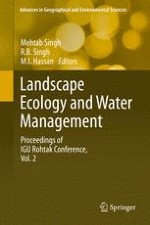2014 | OriginalPaper | Buchkapitel
3. Landslide Disaster Management and Reduction: An Approach Through Remote Sensing and GIS
verfasst von : Tarun K. Raghuvanshi, P. M. Kala, Mehtab Singh
Erschienen in: Landscape Ecology and Water Management
Verlag: Springer Japan
Aktivieren Sie unsere intelligente Suche, um passende Fachinhalte oder Patente zu finden.
Wählen Sie Textabschnitte aus um mit Künstlicher Intelligenz passenden Patente zu finden. powered by
Markieren Sie Textabschnitte, um KI-gestützt weitere passende Inhalte zu finden. powered by
